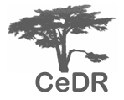


The invisible ones
Birgit Kirkebæk, VIKOM,The Danish Resource Centre of Children and Young People with Multiple Disabilities
Abstract
In disability history, people with multiple disabilities are practically invisible. This is shown by my study of a Danish institution in the period of 1880-1987. This was an institution for mentally retarded individuals who had been given up, i.e. not believed to be within educational reach. The question is why they are also invisible in the activities that based on the theories of the social model unfold e.g. on conferences in Lancaster. Is it because they can not be expected to be active activists? Or is it because the social model is not applicable for the issues of this group? Can the social model capture the problems that people with multiple disabilities and their families face, or does an extended version of the models has to be considered, like the one suggested by the Norwegian philosopher and special pedagogue Solveig Reindal? With reference to this model (and its emphasis of the necessity of a social relational model) and the thoughts presented by Tom Shakespeare in the book "Disability rights - and wrongs", I will give my proposal for the battles that in my opinion need to be fought in order to fulfil the rights of people with multiple disabilities as well as ideas as to how we can act with respect of the bodily restrictions they live under. The views of Tom Shakespeare on how the dichotomy between the social and medical model is too simplified to encompass the complexity of the conditions that people with severe impairments face comply with the thoughts I made after participating in the last conference in Lancaster. In my presentation I will focus on what the concepts of the social model mean to people with multiple disabilities and the ideas we have in Denmark (VIKOM, The Danish Resource Centre of Children and Young People with Multiple Disabilities) on how the concepts and ideas of the social model can be developed to accommodate the particular issues that multiple disabilities represent.